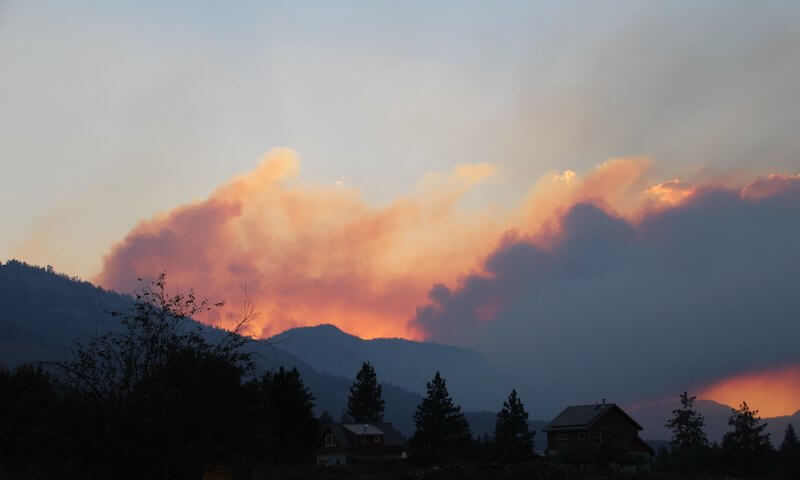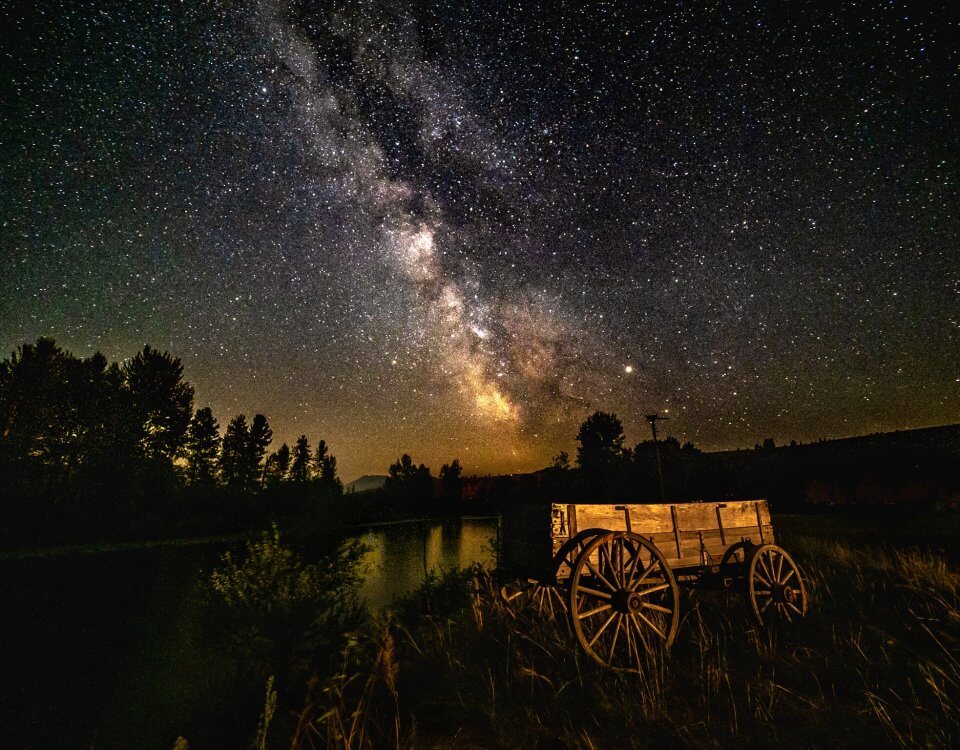Fire and Smoke Resources

Methow Valley Watershed Photo Contest
July 15, 2021
Collaborating to Find Affordable Housing Solutions
July 29, 2021Fire is an essential part of the Eastern Cascade ecosystem we live in. Fire renews and resets our landscapes. For thousands of years, fires were intentionally set by the indigenous tribes living throughout the Northwest to keep forests healthy. At the same time, fires burn homes, cause evacuations, and inundate our Valley with smoke. How can we learn to value fire and use it as a beneficial tool while living through its consequences?
We’ve compiled some fire and smoke resources below that both direct help to those who need it and educate us all about the history of fire in the area, how fire suppression and climate change have shifted the severity and frequency of fires, and how fire could be used in the future to benefit our natural systems. For over a century, forest fires have had negative connotations. Can we reframe them as necessary renewers of landscapes?
How to help those in need:
Support Neighboring Tribes: Just as fires were sweeping alongside the Methow Valley, the Chuweah Creek fire was scorching 14 structures and over 36,000 acres near Nespelem on the Colville Reservation.
There are many options and ways to help. The River Warrior Society is an incredible tribally-run community-driven group who works very effectively to get supplies out to those in most need throughout the Reservation. In Twisp, supplies are being gathered at the Methow Valley Interpretive Center (sideyard) and volunteers are taking them to FYRE in Omak for River Warriors to distribute from there. River Warrior Society- Paypal.me/RIVERWARRIORSOCIETY
Donations can also be made out to the Colville Tribes and sent to the Confederated Tribes of the Colville Reservation, Attn: William Nicholson II, P.O. Box 150, Nespelem, WA. 99155. Brian Namakin at the same address is also receiving any donated items on behalf of the tribe.
Support Local Firefighters: The Winthrop Firefighters Association and Okanogan County Fire District 6 are our local firefighters on the front lines protecting structures around the Valley.
Support Local Businesses: With the tourist season wiped out by smoke and Highway 20 still closed, local business that were beginning to recover from COVID-19 are struggling again. Visit your local businesses as often as you can, or consider donating here to benefit businesses affected by the wildfires.
Learn about Fire Ecology and the Benefits of Wildfires:
Fire Ecology 101: In this podcast and this article, Dr. Susan Prichard, a longtime Methow Valley resident and researcher at the University of Washington orients us to how fire has always been a part of this Eastern Cascade ecosystem, why fires have become more frequent due to climate change and a century of fire suppression, and how fire can be used as a tool to try to avoid the destructive fires we’ve seen lately.
Benefits of Fire on the Landscape:
Recent fires burning around the West have provided examples of how allowing fire to return to a landscape not only improves the health of the ecosystem but also protects the communities living towards them. In areas where fire has been returned to the landscape or thinning has been conducted, fire has been found to move from the canopy to the ground and burn at a much lower intensity. In the Illilouette Creek Basin in California, lightning caused fires have been allowed to burn through over the last 50 years, creating a complex mosaic of vegetation and another fascinating benefit–there is more available water in the soil and the creeks.
This scientific article explains the beneficial impacts of low-severity fires and management in building resistance within Ponderosa pine forests to more high-severity wildland fires.
Fire History: If you want a page-turner about one of the earliest modern mega fires in the West, how the fledgling Forest Service received widespread support, and why fire policy for the last century has been focused on aggressive suppression, read The Big Burn by Timothy Egan. The book tells the story of the firestorm of 1910 which swept through Idaho and western Montana burning an area the size of Connecticut.
Fire Journaling: How do you process the impact of a wildfire on a specific place? Fire journaling, a form of nature journaling, can help us to closely observe and gain knowledge about the effects of fire. How does the fire burn through a landscape? How is the landscape impacted? How is it recovering? These are all open questions that can be asked. This website provides some inspiration and ideas for starting your own fire journaling. If you do start journaling about fire, send us a picture, we’d love to see community observations and questions that arise.
Fire
Protect Yourself and those who are Vulnerable from the effects of Wildfire Smoke:
Clean Air Methow: Prolonged wildfire smoke can have significant health impacts. Clean Air Methow, a project of MVCC, has a smoke ready checklist for you to follow to minimize your smoke exposure.
The Fifth Season: Wildfire smoke now reliably creates a “5th season” in North Central Washington. These audio stories explore different perspectives on smoke and how people have found ways to build smoke resilience.


